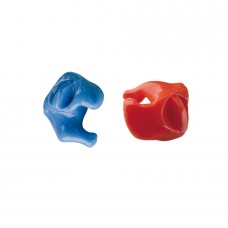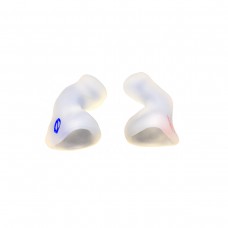Perforated Eardrum: Symptoms, Causes, and Treatment


The eardrum is a membrane at the beginning of the middle ear. It is a thin, taut tissue that vibrates when it receives sound waves and transmits sound to the middle ear. Occasionally, strong pressure or an object can damage it, resulting in a perforated eardrum. The problem can be painful, but you should know that there is a solution in most cases. At Claso we continue to review ailments and illnesses of the ear, a path that leads us irremediably to the situation, unfortunately common: the perforated eardrum. A ruptured eardrum is a tear in the tissue that separates the ear canal from the middle ear. This rupture or perforation can have various causes, symptoms and consequences, and although it usually heals in a few weeks without the need for treatment, there are some situations that may require surgical intervention.
Symptoms of a perforated eardrum

One of the symptoms of a perforated eardrum is pain. It is not a permanent pain. It occurs at the time of rupture and can be quite intense. In a few seconds it will be relieved, but a visit to the specialist will be necessary to evaluate whether the breakage has occurred and determine a treatment.
It is possible that after a sudden or intense change in pressure, after an explosion or trauma caused by an object, for example a cotton swab, you may notice intense pain and the subsequent segregation of transparent liquid. In some cases, slight bleeding may also occur. This is another clear symptom of a perforated eardrum.
The most common symptoms of a perforated tympanic membrane are: occasional pain in the ear that disappears quickly, secretions from the ear that may be clear, with pus or even some blood, hearing loss, ringing in the ears (i.e. tinnitus) or a feeling of vertigo.
If, in addition to the above, you notice hearing loss, ringing in the ears or a sensation of vertigo, it is certain that you are suffering from a ruptured eardrum. What should be done in this case?
Causes of a perforated eardrum
The following eventualities are usually the most common cause of a perforation of the eardrum:
- Otitis media. An infection of the middle ear or otitis media can cause an accumulation of fluids in your middle ear, whose pressure can end up causing the rupture of the eardrum.
- Barotrauma. An injury to the ear caused by a difference in pressure in the air or water. Many cases of perforated eardrum are caused by this occurrence, especially when traveling by airplane, although it can also occur by diving or by receiving a sudden impact on the ear.
- Acoustic trauma. An especially loud sound wave, such as an explosion, can cause a ruptured eardrum.
Treatment for ruptured eardrum
The perforated eardrum has a solution in most cases, although depending on the severity, some sequelae may remain. In these cases you may need hearing aids. Typically, the membrane will recompose itself with a simple treatment imposed by an expert otolaryngologist . If the problem is particularly serious, surgery will be necessary.
While most ruptured eardrums heal on their own within a few weeks, some cases can become complicated, for example if there is an infection in between. Your doctor may prescribe antibiotic drops to stop this infection.
If this rupture in the eardrum does not heal on its own, treatment must be followed to close this hole. A common treatment is a patch to seal the hole in the eardrum. If this treatment fails, the next option is usually surgery. While going through the operating room can be frightening, it is not a complex operation, and most patients can go home the same day of the operation.
If you think that you have suffered damage to the eardrum, go to one of our centres. You can come directly or make an appointment. To contact us use one of the means shown on the Claso website. We will analyse the case and give you a solution.

































